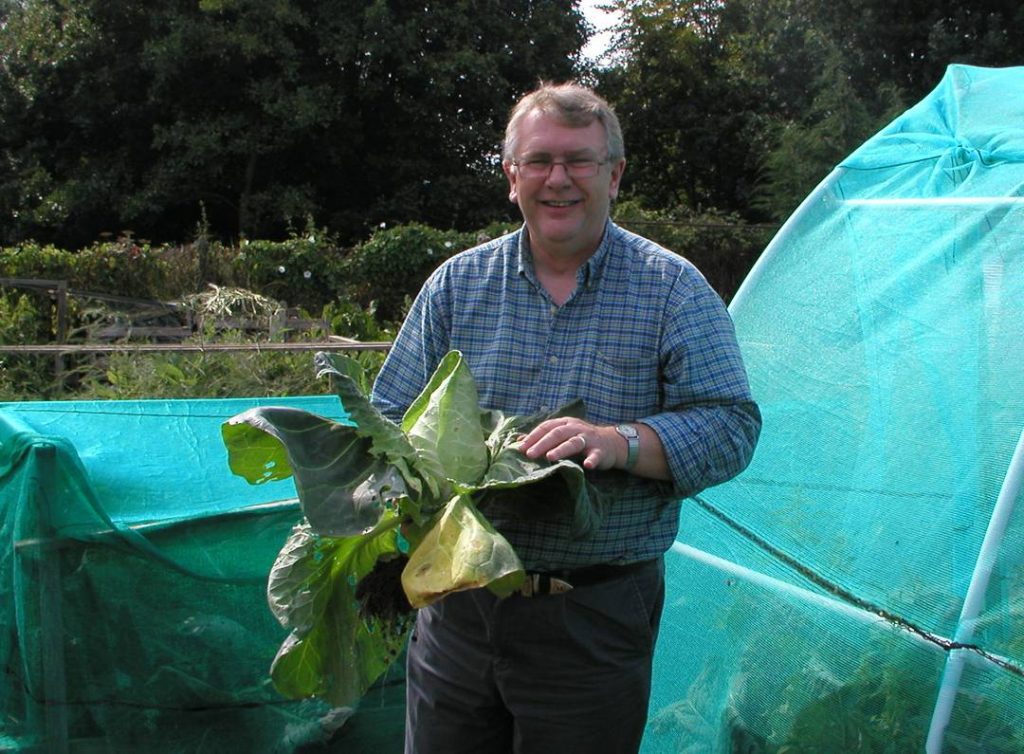This article is about growing the leaf brassicas rather than the Swedes and Turnips. Sadly they can be tricky to succeed with but hopefully by following this guide you’ll get great results. The cabbage tribe, brassicas, are one of the most important food plant groups grown in Britain.
The reason is that they can provide a fresh staple food every day of the year as well as being easy to store and ferment or pickle for long term storage. Cabbages can store in cool cellars (or larders) for months or even longer by fermenting into sauerkraut. Cabbage is also the basis of the Korean staple Kimchi, a rather spicier dish than sauerkraut.
Leaf Brassicas
- Broccoli
- Brussels Sprouts
- Cabbages
- Calabrese
- Cauliflowers
- Kale (Borecole)
- Romanesco
Get the Soil Right
As with any plant, the soil is critical to success. Leaf brassicas are bred to be productive but they cannot give their best if they don’t have enough food to fuel that growth.
If you take a cabbage and separate the leaves, you’ll be surprised just how large an area the leaves cover. Unwrap a mere sprout and you’ll cover a fair sized table. Since the fuel for leaves is nitrogen, it shouldn’t be a surprise that nitrogen availability is the most important factor in growing these brassicas successfully.
The roots can go down two feet (50cm) so a good depth of topsoil is essential. If you’ve taken on a new plot, don’t expect to get that depth of topsoil for a few years, real gardens take time!
The perfect brassica bed will have depth, humus and nitrogen. Adding masses of well rotted manure will accomplish all three. In the autumn dig the soil as deeply as you can, breaking up the bottom spit with a fork and add compost or manure (as much as you can). Roughly break the surface clods and tip about a wheel barrow load of manure per square yard onto the surface.
Leave over winter and the worms will be have been busy breaking up the base of your soil and pulling the manure from the surface down into the ground. In early spring, as soon as conditions allow either fork over or better still rotavate the soil, mixing all together.
Do check this article on fertiliser requirements for growing leafy brassicas
pH Acidity Level for Brassicas
Adding the manure will have had an effect of increasing the acidity of the soil. Brassicas prefer soil to be neutral or even alkaline (above pH 7.00) which helps them maximise nutrient input and also helps to reduce the clubroot spores in the soil. If you can test the soil and raise the pH if needed to 7.00 by adding lime.
You can pick up cheap one-shot test kits or purchase a full soil testing kit to find out all the nutrients in the soil.
If you don’t have a test kit, then add about a kilo of garden lime or better still dolomite lime per square metre. Leave for a week or two to let the rain wash the lime into the soil.
Prior to Planting
The next job is to add some all-purpose fertiliser to the soil, about a handful (2 oz) per square yard. Either Growmore or fish, blood & bone will be ideal. Rake into the top soil.
To add nitrogen without increasing the pH consider using Nitrochalk especially if you’re unable to obtain manure.
Firm Soil & Windrock
Windrock is often a problem with leafy brassicas. The wind rocks the plant, not uprooting it but breaking the tiny root hairs that actually absorb the nutrients and thereby starve the plant no matter how good the level of nutrients in the soil.
If the soil is light and fluffy, heel and toe walk over the plot to firm it up, a firm soil helps to prevent windrock. Provide shelter with windbreaks or grow under netting in windy areas. The netting will not stop the wind but will reduce its speed and power.
Other Problems with Growing Leaf Brassicas
Most failures with the leaf brassicas come down to feeding or disease. I’ve covered diseases here: Brassica Pests and Problems.
If the leaves are looking a little yellow, it’s always worth trying a sprinkling of dried blood or sulphate of ammonia around the stem. Especially with Brussels sprouts and over-wintered cabbages and cauliflowers who can exhaust the immediate available nitrogen.
Further Information on Growing Brassicas
- 12 Tips for Success with Leafy Brassicas
- How to Grow Great Leaf Brassicas
- Fertiliser Requirements of Cabbages & Leafy Brassicas
- Brassica Pests & Problems
- About & Controlling Cabbage Root Fly – Delia radicum brassicae
- Guide to Club Root Plasmodiophora brassicae – Control Clubroot
- Clubroot Resistant Varieties of Brassicas
- Growing Brassicas on a Clubroot Infected Plot





